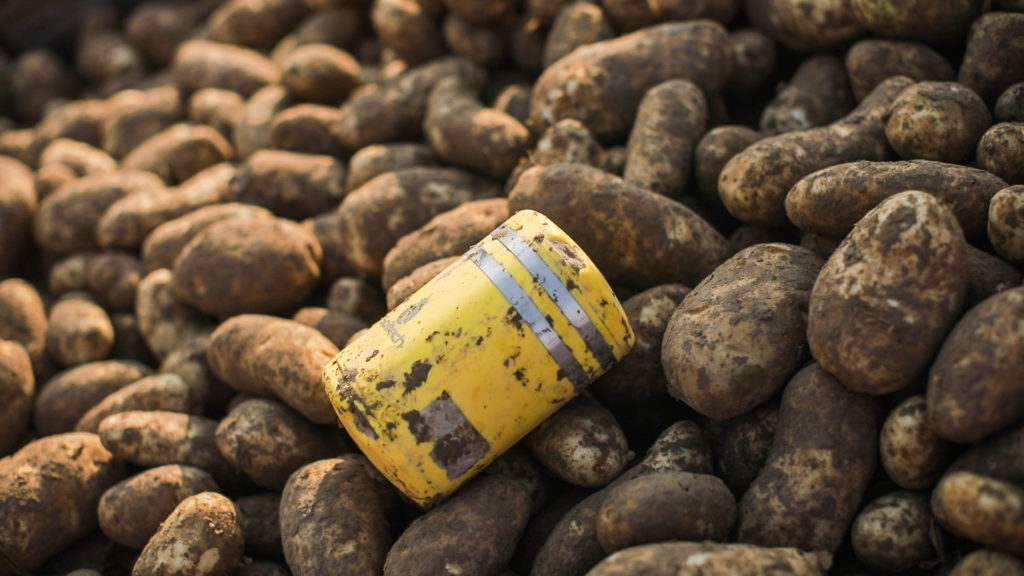
Tracing the potato’s path
True innovation solves a problem, and Soiltech Wireless was born from common issues potato growers faced regarding affordable ways to monitor soil moisture and have remote oversight of their fields.

Ehsan Soltan, CEO of Soiltech, learned about this when he found himself at a potato harvest meeting, where he met a lot of growers, agronomists and consultants who all shared this similar challenge. He also learned that growers would drive between fields — which can sometimes be hundreds of miles — to check the soil in order to make a decision to irrigate.
“They gave me insights into their activities, their jobs, what drives them, the challenges they face. It became clear that there was a lack of available, cost-effective and easy-to- use technology,” Soltan said.
It was then that he knew there had to be an easier way, so he began conceptualizing and developing a wireless sensor.
Over the course of two years, Soltan developed the product directly with growers, skipping a lot of the guesswork by going directly to the end user and asking what it was the product needed to do, cost and look like in order to be useful to growers.
The device evolved from a moisture sensor to a device that monitored temperature, humidity, location and crop damage, which was particularly important for monitoring bruising.
The sensor follows the entire path of the potato — it can be placed in the ground at planting and left there until harvest, where it, too, is harvested.
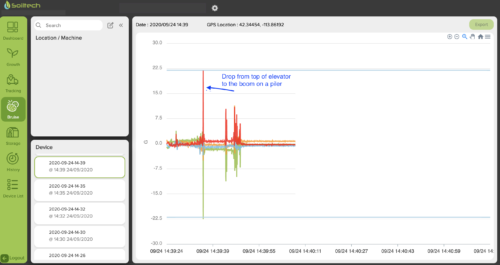
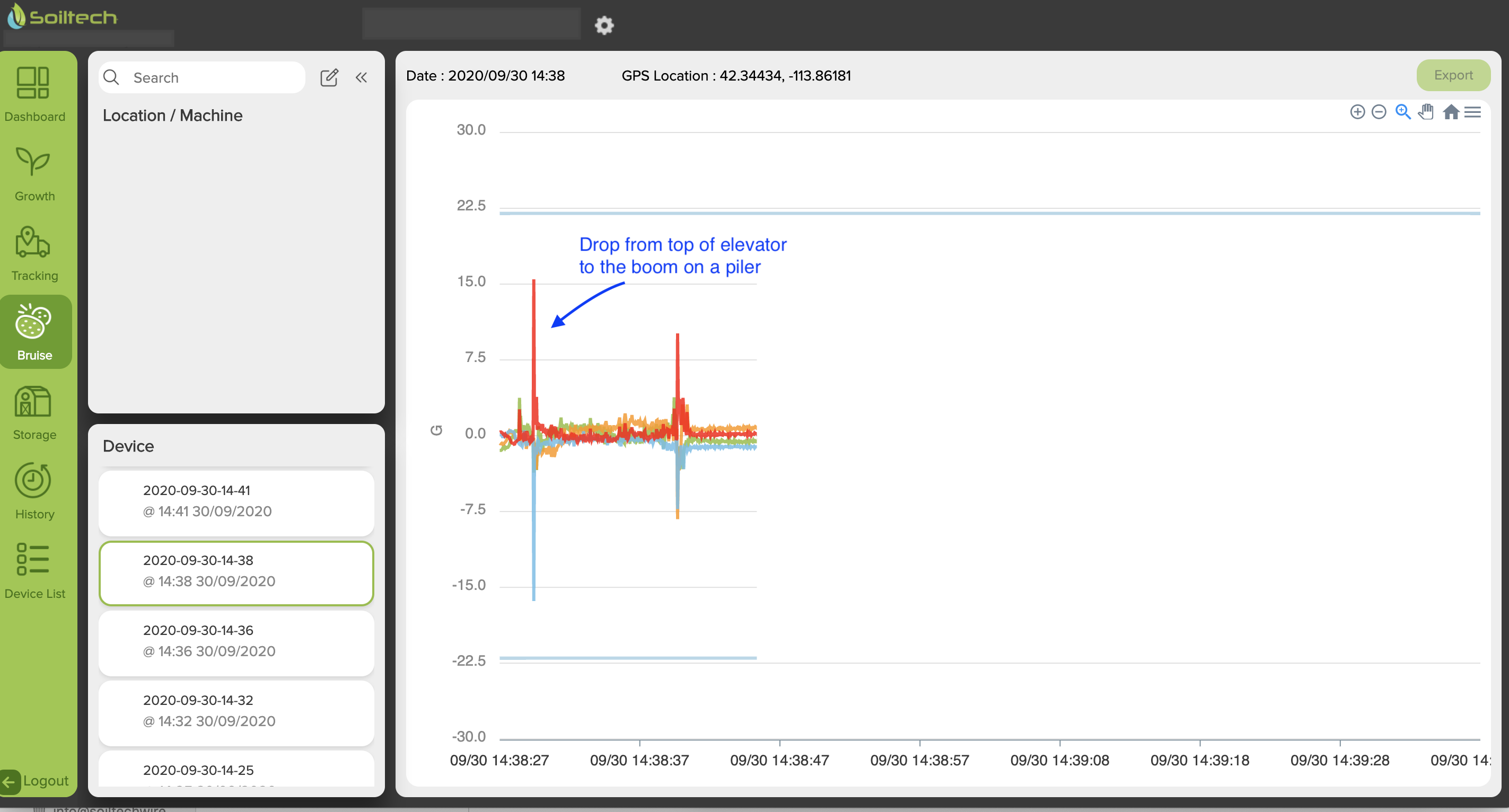
It then measures impact as potatoes are harvested to determine levels of bruising, and can follow the crop all the way to storage, where it continues to monitor various elements like temperature and humidity.
Since the very beginning, Soiltech has continued to upgrade the product with more useful features for growers and processors, even branching out to more up-and-coming uses.
For potato growers faced with monitoring CO2 in storage, and wanting a way to monitor it postharvest, a CO2 sensor was recently added for storage, and the device itself sits nicely on top of the pile and allows for the tracking of temperature and humidity. A 40-foot cable was developed so that the device can be dropped down into the pile in order to help identify hotspots, which is one of the leading challenges of long-term storage.
But others are running with the device for different applications and bigger endeavors, such as carbon credits and sequestration.
Agtech can be guilty of using sustainability as a marketing term with no real demonstrable benefit or goal. Sustainability has become the ultimate buzzword, with an equal number of critics as there are proponents for the actions being taken in the world today. Soiltech, however, is taking sustainability seriously, wanting to quantify what it is companies are doing to ensure adherence to climate standards.
“What we’re doing right now,” said Soltan, “is defining a blueprint for how our device can help a grower or processor or CPG attain certain sustainability goals.”
Whether it’s how much water can be saved, how many trips to the field can be eliminated, how much crop loss can be avoided by monitoring bruising, or spraying on demand as opposed to spraying on a schedule, Soiltech has a dedicated staff working to understand how the device actually helps farmers and companies alike arrive and remain at their sustainability goals.
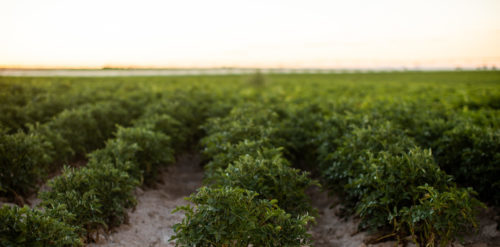
“We’re being open about this. We know that tech companies don’t quantify sustainability as well as they could,” said Soltan. “We’re collaborating with our customers, whether growers or people further downstream, to work on that quantification because we know we can do it.”
Two new features are launching with this in mind. One, currently referred to as Acre Playbook, allows the digitization of generational knowledge of the farm. A farmer may know the ins and outs of a field, and those things may seem simple, but it’s also critical that the staff knows this information as well.
It’s as simple as documenting rotations, where the soil texture changes, where the main water pipes run through a field, or if a neighbor can’t be exposed to overspray if it’s windy. It becomes a database of the important knowledge growers like to keep stored in their heads — knowledge that can be critical during harvest and relayed to temporary workers.
The information can also provide a lot more value to land that may be available for sale, as the farmers can provide a buyer with all the contextual information.
The second new addition is advanced analytics, which includes analytics information specifically for processors and their co-ops, chemical companies, retail, and other aligned industries that aren’t the growers themselves.
“A lot of platforms overwhelm growers, and they become disaffected and don’t use the platform. That was a key thing growers told us from day one: ‘I only need to know a few things in the season; just show me these.’ And we did that,” said Soltan. “The other side of the coin is that processors and other industry professionals want more information. So, if you’re an agronomist with 50 growers under you and you want to provide a digital service but can’t develop your own software, leverage ours.”
This offering will allow agronomists to generate their own branded reports and keep a concise record of everything that happens in their clients’ fields.
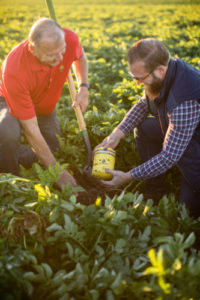
“So we’re not developing a sustainability product for the sake of it being sustainable, because that’s what everybody wants to hear,” Soltan said. “It’s being done off a foundation to already provide value. I think that’s how we’re a little bit different.”
Soiltech released a case study conducted by AT&T that looked at four Idaho potato growers. One of the growers — a southern Idaho potato grower with around 10,000 acres — saved 120 million gallons of water in one season.
“All he did was switch off his pivots three times,” said Soltan. “That was it.”
The grower was able to see that the field still held enough moisture, and that irrigation wasn’t necessary. Not only that, but it reduced greenhouse gas emissions by eliminating unnecessary trips to the field and reducing water pump use. The sensor helped reveal a 4% year-on-year increase.
In potatoes, the recommendation is one sensor for every 10-20 acres. The device arrives fully charged to customers and can last a year. It’s chargeable via USB, which makes charging easy between seasons or right before long-term storage.
The device lasts a minimum of five years, but, for context, the first thing that generally dies out in electronics is the battery.
But batteries usually die out with excessive charging, said Soltan, who has a background in electronics manufacturing. “This is charged only once a year, so the battery is not likely to die out for quite some time. It’s modular, and can be replaced if needed.”
Soiltech worked with growers to arrive at a price as well, essentially starting there and working within the means to keep the device affordable. It is currently available for $400 per unit with a cost of $99/year for the software, regardless of the number of units.
Today, Soiltech has over 2,000 sensor deployments across hundreds of growers. This includes a large variety of crops for a multitude of reasons, but the device still offers the most benefit for potato growers.
Photos: Soiltech Wireless







